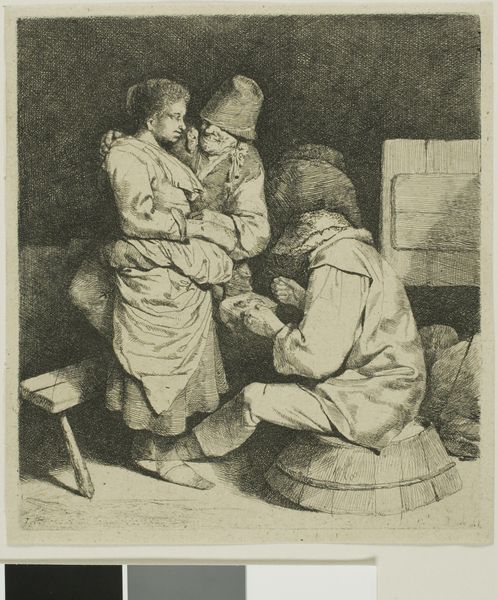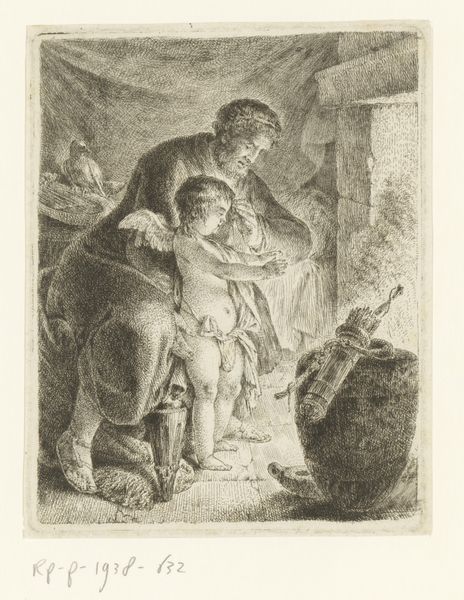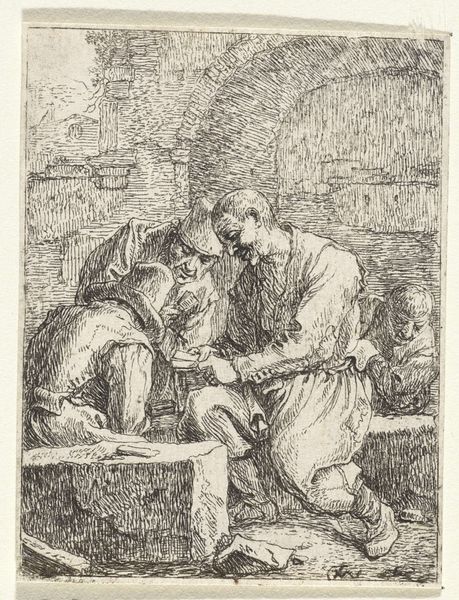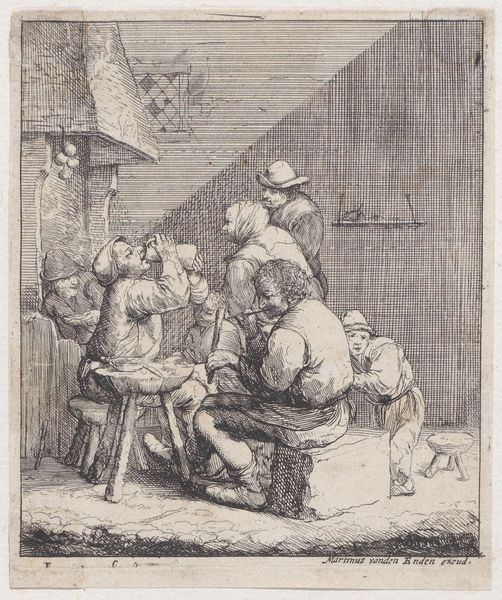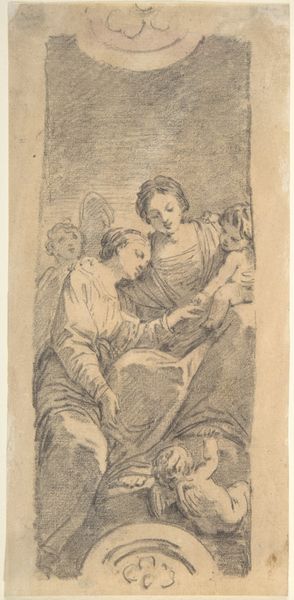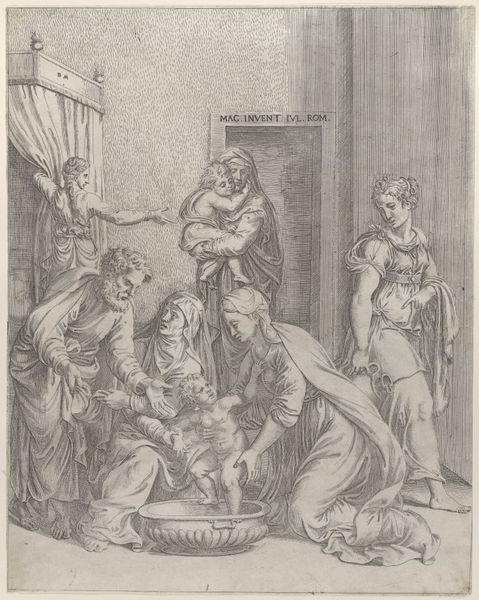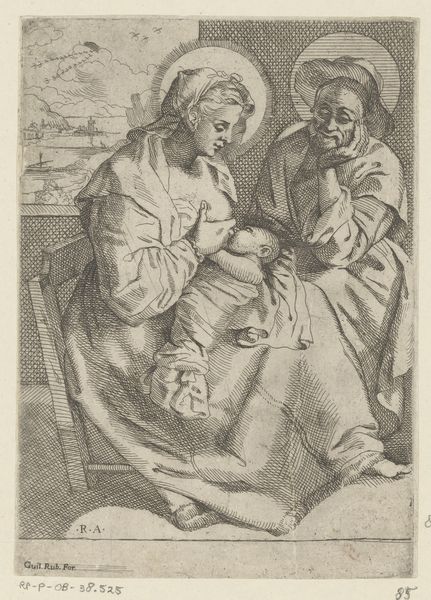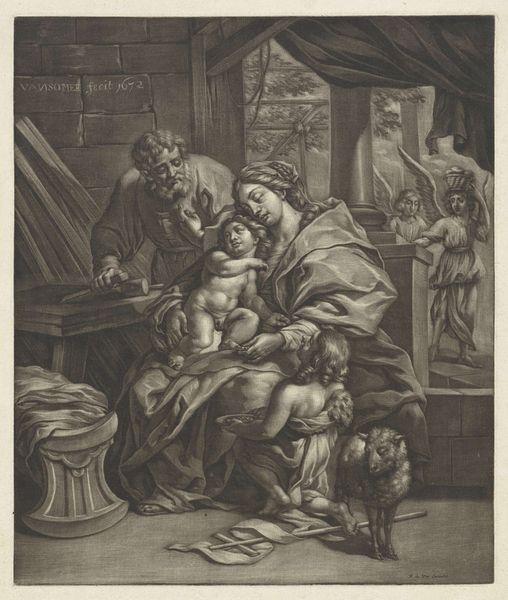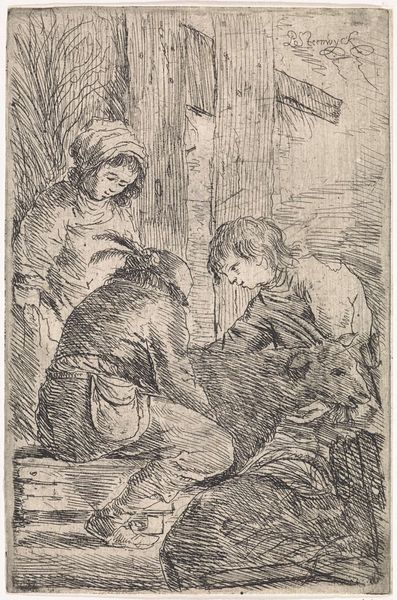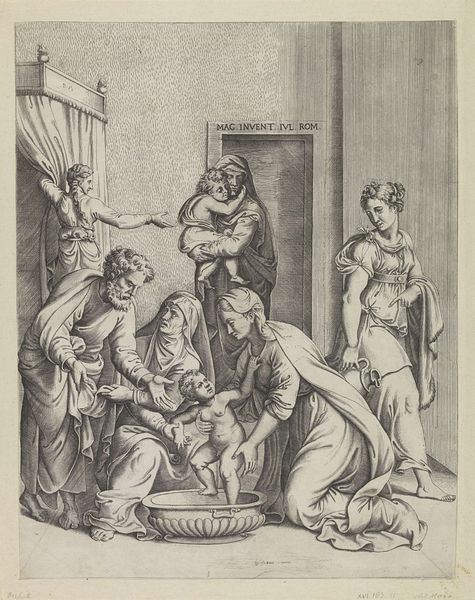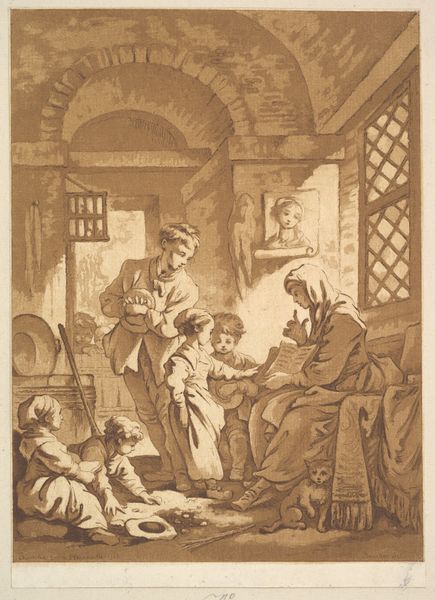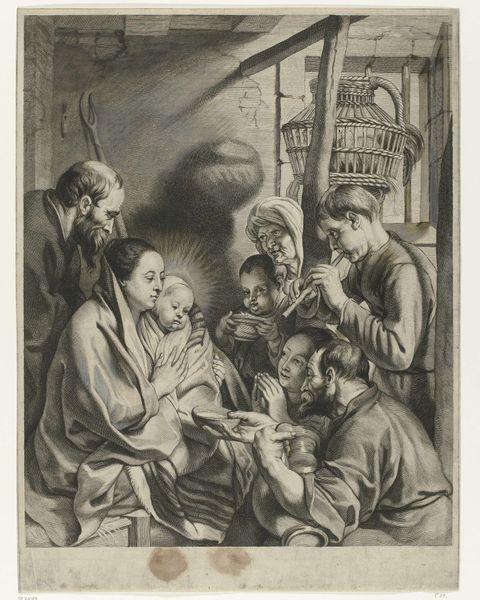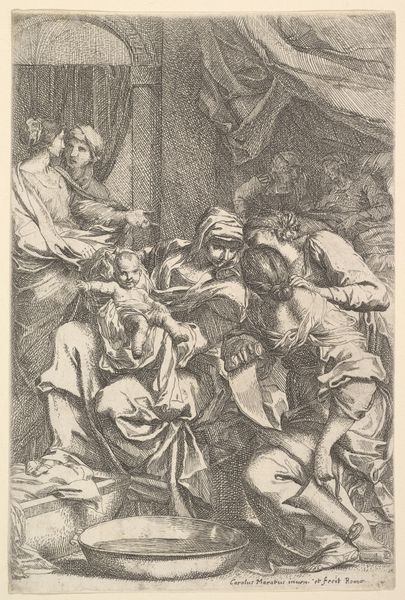
print, etching
#
portrait
#
narrative-art
#
dutch-golden-age
# print
#
etching
#
old engraving style
#
figuration
#
pencil drawing
#
portrait drawing
#
genre-painting
Dimensions: height 74 mm, width 59 mm
Copyright: Rijks Museum: Open Domain
Curator: This is Jacques Dassonville's "Vrouw ontluist hoofd van jonge man," an etching believed to have been created sometime between 1629 and 1670. Editor: The initial mood is certainly unsettling; the scene depicts such raw emotion rendered with detailed intensity, amplified by the strict, almost scratchy lines that carve out the forms. It is both captivating and a little uncomfortable to behold. Curator: Etchings, like this, allowed artists to circulate images widely. Dassonville, a somewhat obscure figure, likely made these prints for commercial distribution. What we see here could represent a common domestic scene, reflecting social realities around hygiene and labour in 17th-century Dutch society. Editor: Let’s focus on the composition itself. The converging lines of the background push our gaze to the figures in the center; notice the subtle details etched into the face of the boy and the woman examining his head, which are highly expressive despite their miniature scale. The restricted palette only furthers the emphasis on form. Curator: Consider what it means to scratch an image onto a plate and reproduce it en masse. It turns an intimate act, the delousing, into a commodity, something bought and sold in the marketplace. And let's not ignore the other figures witnessing this, reinforcing its communal nature and broader implications. Editor: Perhaps, but one could also consider how the light catches the curve of the pot sitting just beside the action; the interplay of light and shadow creates depth that contrasts the foreground's flatness. These formal strategies elevate it beyond mere documentation. Curator: I agree, but the choice to depict this specific labor and these people, subjects not typically found in higher art, speaks to the changing role of art as it reflects daily life and broader economic realities. Editor: So, as we look one last time at "Vrouw ontluist hoofd van jonge man", we realize that the artist’s choice of materials and style adds depth to the mundane. Curator: Yes, and recognizing it as a material object and record gives it further context and value, telling us a story of both production and consumption.
Comments
No comments
Be the first to comment and join the conversation on the ultimate creative platform.
